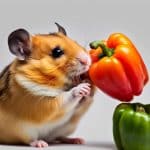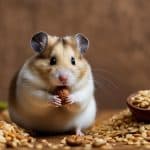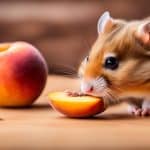Key takeaway:
- Corn snakes can vary in size depending on various factors such as sex, diet, tank size, and temperature and humidity levels. It is important to understand these factors and provide the appropriate care and environment for their growth.
- Tracking and monitoring corn snake growth is essential for ensuring their well-being. Using a growth chart and measuring a corn snake can help determine if they are developing properly.
- Proper care for corn snakes includes handling and socialization, providing the right habitat and tank requirements, feeding them a suitable diet, and maintaining the right temperature and humidity levels. These factors contribute to their overall health and growth.

Corn snakes, a popular choice among reptile enthusiasts, have captivated many with their beauty and docile nature. In this section, we will explore the growth patterns of corn snakes, diving into their development from hatchlings to adults. We will also delve into the intriguing topic of tracking corn snake growth, providing insights into the factors that influence their size and the ways to monitor their progress. So, let’s embark on a fascinating journey into the world of corn snake growth.
Understanding the Growth of Corn Snakes
Corn snakes, native to North America, grow differently. Sex, diet, tank size, and temperature & humidity levels in their environment all influence this growth.
Sex can affect growth rates and size at maturity. To ensure healthy growth, corn snakes must be fed a proper diet.
Tank size matters, too. Providing enough space for movement and exercise helps them grow well. Temperature & humidity must also be kept in check for their overall health and growth.
Charting their growth is helpful. Measuring length & weight periodically can track progress.
Factors Affecting the Size of Corn Snakes
Corn snakes are a popular snake species, known for their many colours and patterns. To look after them properly, it is important to understand what affects their size.
- Sex: Usually, female corn snakes are bigger than males.
- Diet: Eating lots of protein and essential nutrients can help them grow.
- Tank size: They need a spacious tank to roam and stretch in, to help them develop.
Temperature and humidity also affect their size. Staying in the right temperature range and humidity helps them to grow optimally.
Every corn snake is different, and they may grow differently depending on the factors mentioned. Therefore, owners should keep a close eye on their pet’s growth and make any adjustments needed for their health.
Tracking Corn Snake Growth
Corn snake growth can be tracked through sex, diet, tank size, and temperature/humidity levels. Owners can use a table to track these factors. The table would have columns for each factor, and rows for the specific details.
The growth chart gives a visual representation of the effects of the different factors. It helps owners identify changes or issues with their snake’s development.
Throughout history, breeders and enthusiasts have closely observed corn snakes. This data has helped us set care guidelines and understand how factors influence growth rate. Studying these patterns helps us care better for these reptiles.
Corn Snake Growth Chart
Corn snakes age and experience growth. To understand how they mature, a Corn Snake Growth Chart is helpful. This chart includes columns with info on sex, diet, tank size, temperature, and humidity. It helps owners track their snake’s size and progress.
The chart shows the impact of different factors on growth. For example, sex may affect size and rate. Furthermore, diet plays a role in development. Tank size impacts physical growth. Temperature and humidity are also important.
The chart does not cover sexual maturity and reproduction. These are important to understand, though.
To ensure corn snakes grow well, owners should:
- Provide a balanced diet with appropriate nutrients.
- Create an environment that mimics their natural habitat.
- Regularly check temperature and humidity.
- Track maturation milestones.
By following these suggestions, owners can help their snakes develop healthily. Every snake needs individual care, too.
Measuring a Corn Snake
To track their growth and monitor their health, corn snakes should be measured regularly. It’s a key part of caring for these reptiles. Stretch the snake out head-to-tail on a flat surface. Use a ruler or tape measure to measure in inches or centimeters. Record the measurements to track growth over time. Then, compare to a corn snake growth chart.
Weighing and checking body condition are also great for assessing overall health. Regular monitoring helps spot any potential issues early.
A top tip: Handle your corn snake carefully and wrap a soft cloth or towel around it for gentle support while measuring.
Providing Proper Care for Corn Snakes

Proper care is essential for the health and well-being of corn snakes. In this section, we will explore the key aspects of providing the right care for these fascinating reptiles. From handling and socialization to habitat requirements and feeding habits, we’ll uncover the crucial steps to ensure their optimal health and happiness. Get ready to dive into the world of corn snake care and discover the secrets to keeping these mesmerizing creatures thriving.
Handling and Socialization
Corn snakes need to be handled frequently from when they are young. Gently hold and support the body, not squeezing or moving quickly. Ensure a quiet and peaceful atmosphere to prevent stress.
Regular handling and socialization helps them adjust to human contact. Provide objects for climbing and hiding to stimulate natural instincts. Positive handling and socialization helps corn snakes thrive and build bonds with their caretaker.
It’s essential to notice that each snake has different temperaments, some may be docile, skittish, or defensive. Respect its preferences for proper interaction.
Habitat and Tank Requirements
For corn snakes, providing the right habitat and tank is necessary for their well-being. Creating a good environment involves factors like tank size, temperature, and humidity control. By understanding and meeting these needs, owners can make sure their corn snakes stay healthy and happy.
A table can help list all the essential factors. It should include Tank Size, Temperature Range, Humidity Levels, Substrate Type, and Hideouts. This helps create an optimal living space.
Tank Size: Snakes need enough room to move. The size should suit the size and growth stage of the snake.
Temperature Range: Maintaining the right temperature is vital. Provide a gradient so the snake can thermoregulate.
Humidity Levels: Corn snakes need moderate humidity. Too low or high and it can cause dehydration or respiratory issues.
Substrate Type: The substrate must keep the tank clean and hygienic. It should retain moisture and be easy to clean.
Hideouts: Hideouts give the snake security and reduce stress. Caves or snake hides work well.
Pro Tip: Monitor and adjust the habitat regularly. Observing your snake’s behavior and health will help it stay suitable throughout its life.
Feeding and Diet
Feeding and diet are crucial for caring for corn snakes. Knowing their needs is vital for their health. Things like food type, feeding schedule, and portion size have a big effect on their well-being.
Let’s break it down:
| Feeding & Diet | |
|---|---|
| Type of Food | Corn snakes are carnivorous reptiles. They eat small rodents like mice or rats. They may also eat smaller vertebrates from their natural habitat. It is vital to give them prey that is the right size. |
| Feeding Schedule | When young, corn snakes feed every 5-7 days. As they mature, this decreases to every 10-14 days. Keeping their feeding schedule consistent is important for their health. |
| Portion Size | Prey should be the same width as the widest part of the snake’s body. This helps them swallow and digest without issues. |
It is also essential to keep feeding areas clean and handle prey safely.
Overall, understanding corn snakes’ dietary needs helps their growth and development.
Plus, constrictor snakes rely on constriction rather than venom to subdue prey before eating (Reference: ‘Understanding Corn Snakes’).
Temperature and Humidity Control
Temperature and humidity control are a must for corn snake care. The ideal temperature is 75-85°F (24-29°C). Plus, a basking area of 90°F (32°C) helps create a proper environment. Humidity should be kept between 40-60%.
Monitoring temps and humidity with thermostats and hygrometers is advised. Fluctuations in these levels can cause stress, respiratory issues, and even regurgitation of food. So, snake owners should strive to make a stable and consistent habitat.
In conclusion, controlling temperature and humidity is key for corn snakes. With the recommended range and stability, their health and safety will be ensured.
Lifespan and Maturity of Corn Snakes

Corn snakes, fascinating creatures that they are, have distinct lifespans and unique reproductive characteristics. In this section, we will explore the lifespan comparison between wild and captive corn snakes. Additionally, we will delve into the intriguing realm of sexual maturity and reproduction in these captivating snakes. Get ready to uncover the remarkable facts surrounding the lifespan and maturity of corn snakes.
Lifespan in the Wild Versus in Captivity
Corn snakes have different lifespans in the wild and in captivity. Diet, habitat, and handling all influence this. In the wild, they eat small animals and birds, as well as living in forests, grasslands, and swamps. This variety of food and environment helps them live longer. Captive snakes eat only rodents. Also, their confined space and human contact increase stress levels, shortening their lifespan.
A table can compare the lifespan of wild and captive corn snakes. It has columns for diet, habitat, and handling. This lets us see how these things affect the snake’s lifespan. For example, wild corn snakes have more food sources, so they live longer.
Other factors may influence lifespan, too. Genetics and environment could affect health and resilience, and so the lifespan. To give captive snakes longer lifespans, give them a balanced diet, good habitat, and less stress from handling. This includes a diet like their natural prey, an environment that mimics their natural habitat, and regular monitoring of their health.
Sexual Maturity and Reproduction
Corn snakes reach sexual maturity at different ages, based on various factors. Diet, tank size, temperature and humidity all influence their growth and development. With the right care and environment, they can mature and reproduce.
Sexual maturity is essential for corn snakes. They need to be physically ready for reproduction. Give them a good environment with the right tank size and temperature. Plus, a balanced diet is important for their health. It affects their ability to reproduce.
Lifespan varies between captivity and the wild. In captivity, with proper care and nutrition, they live longer. This increases their chances of reaching sexual maturity and reproducing.
Conclusion

The result is obvious: corn snakes can become different sizes based on genetics, diet and general health. It is vital for snake owners to manage and observe their pet properly to help it reach its maximum size. Knowing these things and talking to a vet specialized in reptiles will help owners give the best possible care for their corn snake. With the perfect care, corn snakes can grow into stunning adults and give a great experience for reptile lovers.
Some Facts About How Big Do Corn Snakes Get?:
- ✅ Corn snakes can grow to about 900 grams (2 lbs) and about 60 inches long. (Source: Pet Keen)
- ✅ Corn snakes reach their full size between 2 and 3 years of age, starting at 8-12 inches and ending up being 4-5 feet long. (Source: Pet Keen)
- ✅ Proper tank size, temperature, and diet can affect the growth of corn snakes. (Source: LoveToKnow Pets)
- ✅ Corn snakes should be fed once a week with mice as their main food source, and they can eat up to three mice in one sitting. (Source: LoveToKnow Pets)
- ✅ Corn snakes can live for 20 years or more in captivity. (Source: A-Z Animals)
FAQs about How Big Do Corn Snakes Get?
Corn snakes can grow to about 5 feet (60 inches) long and weigh up to 2 pounds (900 grams) when fully grown.
No, corn snakes are not a threat to humans. They are non-venomous and are generally considered docile and easy to handle.
Several environmental factors can impact the growth of corn snakes, including tank size, temperature, humidity, and diet. A tank that is too small or too large, as well as improper temperature and humidity levels, can stunt their growth.
Corn snakes reach their full size between 2 and 3 years of age. They grow slowly and steadily without dramatic growth spurts.
Corn snakes primarily eat small rodents, such as mice, as their main food source. They should be fed once a week with mice, and they can consume up to three mice in one sitting.
To ensure optimal growth, corn snakes require a proper diet of mice, an appropriately sized tank, suitable temperature and humidity levels, and regular handling and socialization from a young age.








